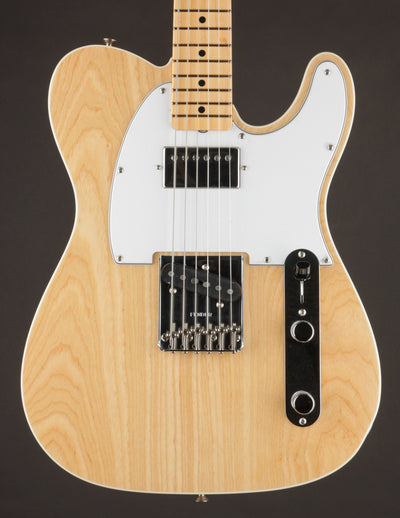There's a reason the likes of Jason Isbell has gravitated towards a '60 - they're transcendently great instruments that'll handle everything you throw at them with ease.
1960 Fender Stratocaster just into the shop!
The classic and vibrant 3-Tone Sunburst finish with a slab Rosewood fingerboard over Maple neck is a look that'll never go out of style. It also happens to deliver a specific tone and response unique to Strats from this period. The aforementioned slab Brazilian Rosewood fingerboard - newly adapted in 1959 - brought not only a new look to the model, but a new feel and tone. There's this collision of 50s Strat woodiness and clarity, and the percussive, bold, and punchy attitude that early 60s Strats became known for.
This '60 weighs in at a tick under 7.5lbs on our scale and has an amazing amount of resonance that proves its power acoustically and plugged in. The necks of this period are slim and fast playing with a healthy taper, and this one doesn't disappoint! Rhythm work is near effortless in the first and second positions, and single-note runs or leads feel perfectly natural in transition. The neck feel is further elevated by a great refret with vintage spec wire done in-house by Glenn Nichols, replacing the original worn frets the guitar came in with.
There are too many overused adjectives at this point to describe what original black bobbin pickups can do in a great Strat. Without getting too gushy, we can confidently say this Strat will give you all that great Stratty tone and so much more. Smooth, round neck pickup tone, muscular middle pickup tonality (a favorite among many of us here at TME), and some great clarity and bite in the bridge. They all complement each other so well - and even sneaking those in-between positions via the original 3-way switch reveals just how well those '2' and '4' sounds translate.
The guitar was acquired by a local gentleman who'd owned it since the early/mid 1970s. It's got some great vibey natural wear that tells you it's seen a fair share of gigs over the years without being totally abused. At some point, he'd replaced the tuners although doesn't recall the circumstances surrounding the change. There's also some old and minor finish touchup/overspray on the bass side just off of the inner curve of the pickguard, likely to cover up a divot from play wear. It looks like a second string tree was also added at some point along the way, but has been removed, leaving a small screw hole behind. The tremolo claw screws were also replaced at some point.

Body
Hardware
Neck
Other







































